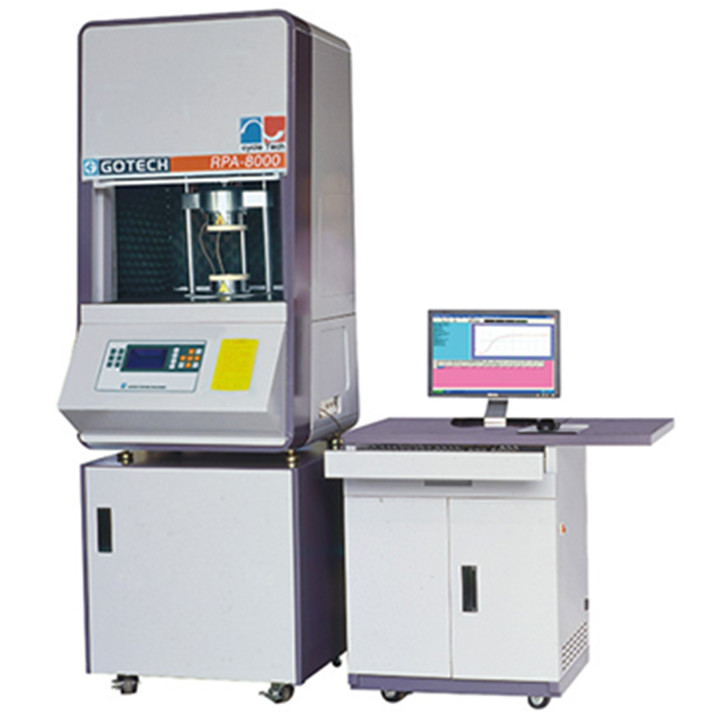Rubber Process & Rheological Properties Tester >
Strength Tester >
Viscoelasticity Tester >
-
Dynamic Mechanical Analyzer >
-
Frequency & Temperature Scan >
-
Elasticity Tester >
-
Creep Stress Relaxation Tester >
Fatigue Tester >
Friction Tester >
Environmental Testing Machines >
Hardness Tester & Thickness Gauge >
Weight & Density Testing Machines >
Physical & Chemical Analyzer >
Appearance Quality Testing Machines >
Sample Machines >
Environment Quality Testing >
Plastometer Standard Rubber >

Name
Rubber Process Analyzer
Model
RPA-8000A
Description
RPA8000 Rubber Process Analyzer is an advanced test instrument, designed to measure the properties of polymers and rubber compounds before, during and after cure by dynamically changing frequency, stress, and temperature so that the processability, vulcanization properties, physical properties of polymers and rubber compounds. It can test rubber compound, crude rubber, and other thermoplastic elastomers.
The RPA is very highly sensitive and can detect the change in properties caused by a little composition change during production. It is characterized by easy operation, time saving, cost saving, high efficiency and multifunction, so it has been widely and flexibly used to replace many traditional equipment and tests in many areas.
Standard
ASTM-D5289、ASTM-D6204、ASTM-D6601、ASTM-D1646、ASTM-D2663、ASTM-D3045、ASTM-D2231、ASTM-D412、GB/T 16584、ISO-6502、
Key Technical Data
Temp. range: Ambient temp.~230°C
Temp. control: Specialized micro processor, fast heating and cooling
Temp. Accuracy: ±0.03°C
Min. temp. reading: 0.01°C
Heating rate: 30℃~190℃ < 6 min
Temp. returning index: Takes about 50 sec to reach the set value after placing specimen and closing dies.
Oscillation strain: ±0.07~±1256% (Angle ±0.01°~±90°) Driven by direct-driven servomotor
Oscillation frequency:0.001~40 Hz (0.06~2500 rpm) Driven by direct-driven servomotor
Torque range:0.0001~280 dN–m (0~250 lb-in)
Units of measure:
a) Torque:S*, S`, S" (N-m, dN-m, lb-in, kg-cm)
b) Shear modulus:G*, G`, G" (Pa, MPa, psi)
c) Temp:°C, °F
d) Frequency:cpm, Hz, rad/s
e) Strain:arc, %
f) Optional calculated results:η`, η", η*, j`, j", j*, tamδ
Subset types:
A) Vulcanization test (fixed temp vulcanization, variable temp. vulcanization, static vulcanization, fixed torque vulcanization,etc.)
B) Sweep (including strain sweep, temp. sweep, frequency sweep, matrix timed test, etc.)
C) Stress relaxation
Pressure:3.6 kg/cm2 (0.36 MPa) prepared customer
Dimension (W×D×H): Main unit 68×80×3250px
Weight(approx.):Main unit 220kg
Power:1∮,AC 220V,7.5A (Specified by user) Deviations from these ranges may affect performance.







